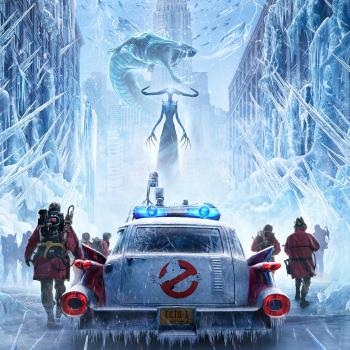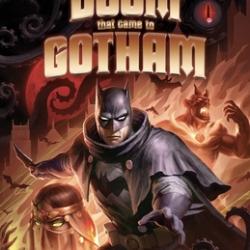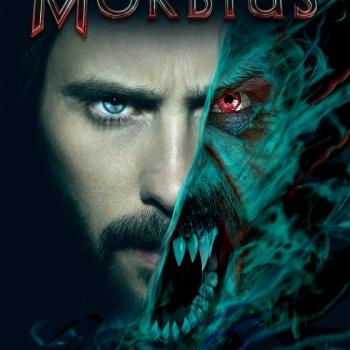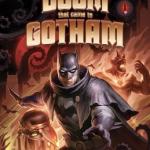Review of The Man Who Shot Liberty Valance, Directed by John Ford
By PAUL D. MILLER
Here is a movie that just begs to be a Jeopardy question. The category is “Classic Film.” The answers are: “The only movie in which Jimmy Stewart punches John Wayne in the face,” “The second movie in which Jimmy Stewart plays a U.S. Senator,” and “The best John Ford movie never to be nominated for anything.” The question: “What is The Man Who Shot Liberty Valance”? It is the 117th or 205th greatest film of all time, according to the British Film Institute and IMDB.com, respectively.
Like any good classic, this is first and foremost just a cool movie. It is a standard western, complete with panoramic desert vistas, a truly detestable villain, lots of unshaven men shouting and drinking in saloons, and a shoot-out in the dusty streets. It is also a political drama, set in the late 19th Century western frontier, about people becoming citizens and then fighting corruption and lawlessness. It also features a bumbling sheriff whose voice is instantly recognizable if you grew up, as I did, watching the 1973 Disney version of Robin Hood and couldn’t get Friar Tuck out of your head.
The story follows Ransom Stoddard (Jimmy Stewart)—a lawyer who arrives on the frontier seeking to practice law but soon falls afoul of the local villain, Liberty Valance (Lee Marvin). In between stands Tom Doniphon (John Wayne), the local hero, protector, gunslinger, and everything else John Wayne is in these kinds of movies.
Watching Wayne and Stewart interact is fascinating. They have such different personas and tended to star in such different kinds of movies (can you imagine John Wayne in It’s a Wonderful Life or Mr. Smith Goes to Washington?). That they succeed in establishing a credible rapport goes a long way to explaining the film’s strength. They are not exactly friends—the lawyer despises the gunslinger’s violence; the cowboy holds the lawyer’s books in contempt. They are rivals insofar as they represent different ideals (law versus force) and, more prosaically, as they compete for the affections of a girl. But they have a common enemy in Liberty Valance, and are thus thrust together. Watching them reminded me of Han Solo and Luke Skywalker: the cowboy and the idealist, the mercenary and the revolutionary. They have an uneasy camaraderie that amounts to less than full friendship, but more than a business transaction. [Spoiler alert] They even resolve the final confrontation in a manner similar to Han and Luke in Episode IV.
The film is about the passing of the cowboy and the coming of civilization, law, and order, but the inevitable need of the latter for the former’s ways. Wayne’s character never tires of reminding Stewart’s that law is pointless without the means to enforce it: good does not triumph because it is good, but because it carries superior firepower. He might have said that the state “does not bear the sword in vain” and that Stoddard, as a servant of the law, needed to understand that he was “an avenger to carry out God’s wrath on the wrongdoer,” (Romans 13:4). Too much idealism can forget the violence upon which the state must necessarily rest, and thus become its own undoing.
But civilization must come. A society built on nothing more than power and violence is no society at all: violence must be harnessed, channeled, and controlled. It must be put in the hands of a select group of people who are charged to wield it not for their personal benefit, but for the common good. Doniphon understands that, and takes several steps to help civilization come, to establish and protect Ransom, to get him elected to the state convention and then to Washington—even at great cost to himself. In one especially poignant scene, Doniphon drinks himself into a stupor and burns his own house down in a fit of self-pity. One thinks he senses the twilight of his way of life.
In the end, Doniphon knows that the state does not depend on brute violence, but on violence that people accept as legitimate. That means the state has to invoke ideas about what makes right and wrong. These ideas are often caught up with stories which then imbue the ideas with a history and with heroes who made it happen. (As an example, think of the relationship between the ideals of the Declaration of Independence and the history of the American Revolution.) Ransom’s story is about his rise from a small town lawyer to a U.S. Senator because he had the guts to face down a notorious outlaw. Like many stories, they are sometimes only loosely connected to fact. In the movie, Doniphon shot Liberty Valance, not Ransom. But when those stories help people accept law, order, and civilization, they take on a life of their own. Doniphon was ultimately willing to let Ransom take the credit, and thus write a new story. Plato would have called it a noble lie. As a newspaperman says at the end, “When the legend becomes fact, print the legend.”












